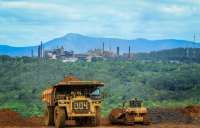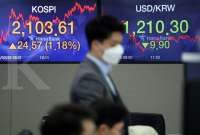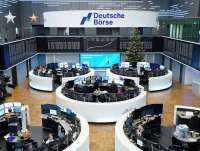INFLATION - NEW YORK. The Federal Reserve is likely to raise U.S. borrowing costs faster and further than previously expected after data on Tuesday showed underlying inflation broadening out rather than cooling as expected.
Overall consumer prices climbed 0.1% last month from July -- economists had expected a decline -- and gained 8.3% from the year-earlier period, the Labor Department reported.
The data also showed accelerating inflation in services and a particularly worrisome rise in the cost of rent, which tends to be sticky from one month to the next, making the Fed's inflation-fighting job all the more difficult
"Putting a lid on escalating shelter costs is the linchpin to taming inflation," said Ron Temple, a managing director at Lazard Asset Management, but because rent rises tend to get locked in for 12-month terms, Fed rate hikes cannot quickly bring shelter costs to heel. "The Fed still has more heavy lifting ahead."
Fed Chair Jerome Powell and his colleagues have already raised borrowing costs faster this year than at any time since the 1980s to fight decades-high inflation.
Read Also: Nickel Miner Vale Indonesia (INCO) Signs HPAL Deal With China's Huayou
After the report, interest-rate futures traders dumped any lingering bets on Fed policymakers slowing their rate hike pace when they meet next week.
Instead they piled into bets on a third straight 75-basis-point interest rate hike that would lift the Fed's current 2.25%-2.5% policy rate range to 3%-3.25%, and began pricing a top fed funds rate early next year of 4.25%-4.5%.
Rate contracts now even reflect about one-in-four odds of a surprise full-percentage-point increase at the Sept. 20-21 meeting, and Nomura's economists on Tuesday said they now believe a 100 basis-point rate hike is the most likely outcome.
"Markets underappreciate just how entrenched US inflation has become and the magnitude of response that will likely be required from the Fed to dislodge it," Nomura's economists wrote in a note in which they also predicted the Fed will need to lift its policy rate to 4.5%-4.75% by February.
Nomura also called for a 100 basis point rate hike in July, which turned out to be wrong.
But Fed policymakers did end up delivering a bigger rate hike at their late-July meeting than they had been signaling, in large part because of an unexpectedly hot inflation reading that came out just days before that meeting.
Read Also: Oil Prices Rise as Supply Uncertainty Mounts
As recently as June, when Fed policymakers last published their own policy path expectations, only one - Minneapolis Fed President Neel Kashkari - saw rates that high at the end of next year.
Policymakers have downplayed the importance of any single data point, and have said they expect to keep raising borrowing costs until there is a sustained drop in inflation, which is running far above the Fed's 2% target.
Despite an easing of prices for some items, such as airline tickets, the August CPI data dashed Fed policymakers' hopes for the beginnings of a broader pullback.
Prices of new cars and household furnishings gained, as did prices of food, while core prices - which exclude volatile food and energy components - jumped 0.6% in August from July, twice what analysts polled by Reuters had expected. That put the yearly gain in core prices - a key measure of how persistent inflation could be - at 6.3%, a jump from 5.9% in July.
The report "was worse than expected; it certainly increased the Fed's resolve to remain hawkish," wrote Roberto Perli, an economist at Piper Sandler, who added the Fed will need to see several months of easing inflation before even thinking about a pause in rate hikes. For now, Perli said, "we are not even remotely close."
A different measure of underlying inflation pressures, the Cleveland Fed median CPI, also accelerated in August, rising 0.7% from a month prior, matching a series high reached in June.
Read Also: Base Metals Rise on Weaker Dollar and Supply Risks
WAGE-PRICE SPIRAL?
Fed policymakers have been particularly attuned to services inflation, of which the labor bill is a big chunk. The concern is that as prices rise, workers demand higher wages to enable them to pay their bills, and employers in turn raise prices to cover the higher wage costs.
Policymakers so far have drawn comfort from the relative stability of long-term inflation expectations, which suggests that a 1970s-style wage-price spiral is not in train.
But wage growth, though still below top-line inflation, is accelerating as the unemployment rate, which was 3.7% in August, remains low and labor shortages force employers to raise what they pay workers.
Noting that the report showed particularly strong inflation in wage-sensitive categories like restaurants and medical care, Goldman Sachs economists bumped up their rate hike outlook for the year, saying they now see the Fed delivering a 75-basis-point hike next week and two half-percentage-point hikes in November and December.
/2019/03/19/222950654p.jpg)









